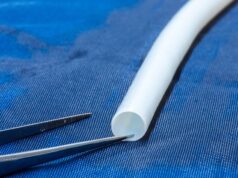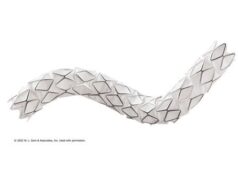Between billing, coding, keeping electronic medical records up to date and … oh yes, … actual surgery, vascular surgeons increasingly report feeling overwhelmed and burned out.
In fact, vascular surgeons and trauma surgeons occupy some of the top rungs among the surgical subspecialties at risk for burnout, according to a 2009 study on the topic.
The Society for Vascular Surgery has created a Wellness Task Force to address causes, concerns, and possible solutions to the issue. The group, co-led by Drs. Dawn Coleman and Malachi Sheahan, has already distributed one detailed survey (to which approximately 800 people responded) and is in the process of readying another.
Burnout also will be addressed at a breakfast session at the Vascular Annual Meeting. “Promoting Physician Wellness: Achieving Quadruple Aim” will be held from 6:30 – 8 a.m. Friday in Room 304/306 of HCC. Tickets are required and may be obtained at a registration counter.
The first survey, preliminary results of which may be presented during the session, sought data on symptoms, if burnout were affecting work and contributing factors that are creating burnout. It also included questions on work schedules, including on-call shifts, how much work respondents were bringing home and electronic medical records.
The second survey, said Dr. Sheahan, hopes to delve deeper into other factors, such as physical stressors and wear and tear on a vascular surgeon’s body.
He noted that he wrote his first column on burnout for “Vascular Specialist” more than a year ago, when he did not yet know the issue’s prevalence. “The articles I’d seen were more than 10 years old,” he said. “I got a lot of feedback which told me there was something definitely there.” Together, he and Dr. Coleman wrote a series of three articles on burnout. Positive reaction led to creation of the Task Force and then to the upcoming VAM presentation.
Topics include changes in medical and surgical practice in the 21st century, the hidden costs of burnout for both physician and patient, interventions to enhance surgeons’ personal well-being, what burnout is and why it occurs, strategies to combat it, and a “Societal Call to Action: Can We Improve Physician Wellness?”
Dr. Sheahan said he hopes to uncover more facts and feedback. For example, do researchers report the same level of burnout as surgeons in private practice? Do surgeons in rural settings have different, or more, stressors than those in urban environments?
He — and others who have written about physician burnout — believes electronic medical records play a big part. “I’m almost positive it’s going to prove a major factor,” he said. “It takes so much more time – time we don’t have.” At least five different medical record systems that don’t talk to each other exist, he said. “How did we develop that?” he asked. “It’s a very aggravating problem.”
Possible solutions also will be explored. Dr. Sheahan advocates that these solutions focus less on personal resilience and more on institutional change. “I believe that if we, on a large scale, tie the problem into our own productivity, health, and our own patient safety, they’ll have no choice but to change,” he said. One example would be to hold software engineers and hospital administrators accountable and get them to fix the lack of integration in EMR systems.
A “rewards program” has possibilities as well. Credits, such as meals delivered for a week, are given for tasks over and above the norm. Stanford University has used this and it shows promise, Dr. Sheahan said.
Some experts have suggested resilience training. Dr. Sheahan disagrees. “Doctors are resilient by nature. Those who aren’t got weeded out a long time ago.” And teaching people to “deal with” stress isn’t the answer, he added. “We have to try to remove the stressors.
“Just let us do what we’re good at. Physicians are happiest, safest, and most productive when doing what we were trained to do,” he said. “We now have so many things that take us away from patient care. It is these distractors that I believe lead to burnout.”
B5: Promoting Physician Wellness: Achieving Quadruple Aim
Friday, 6:30 – 8:00 a.m.
HCC, Room 304/306










